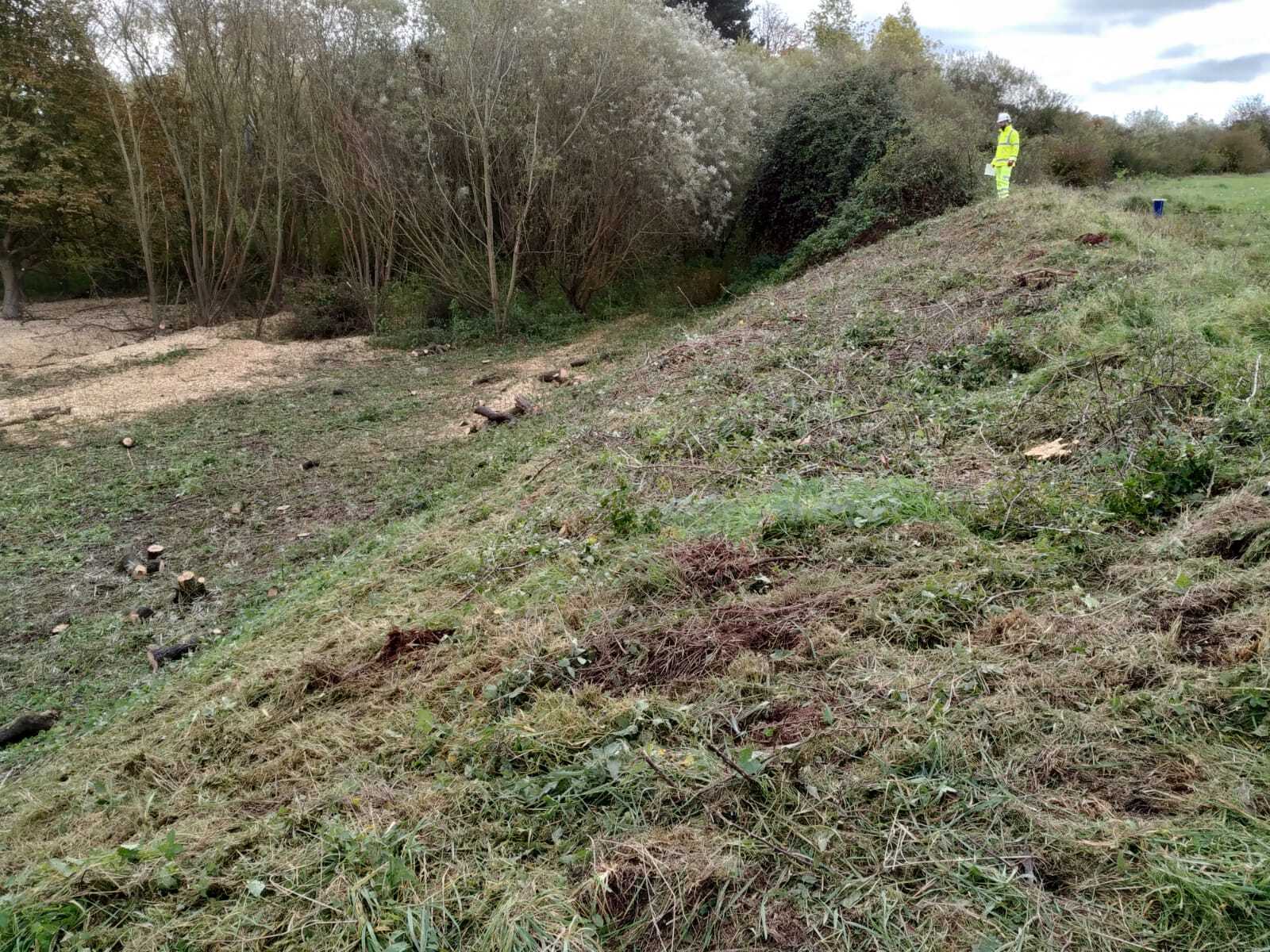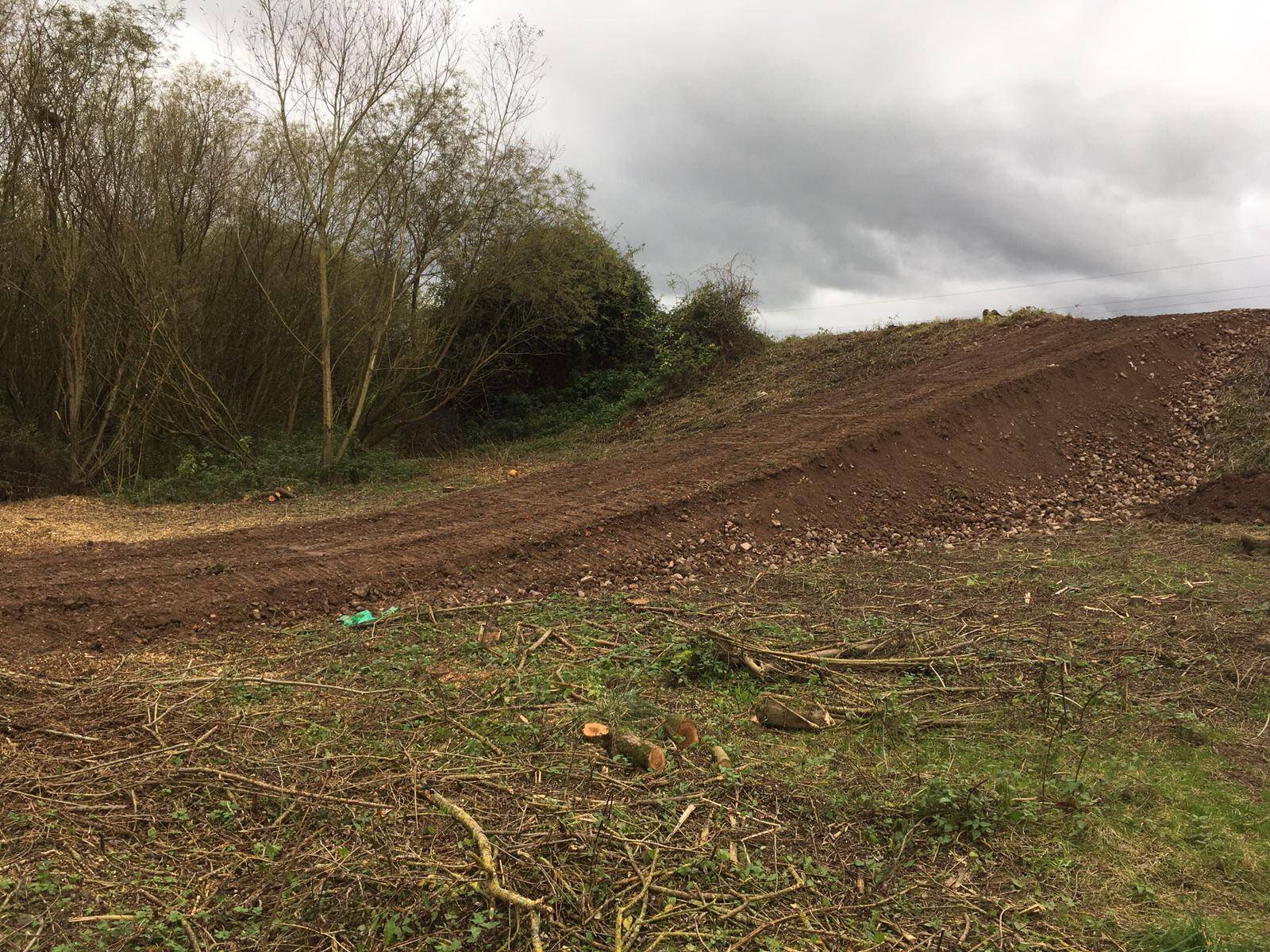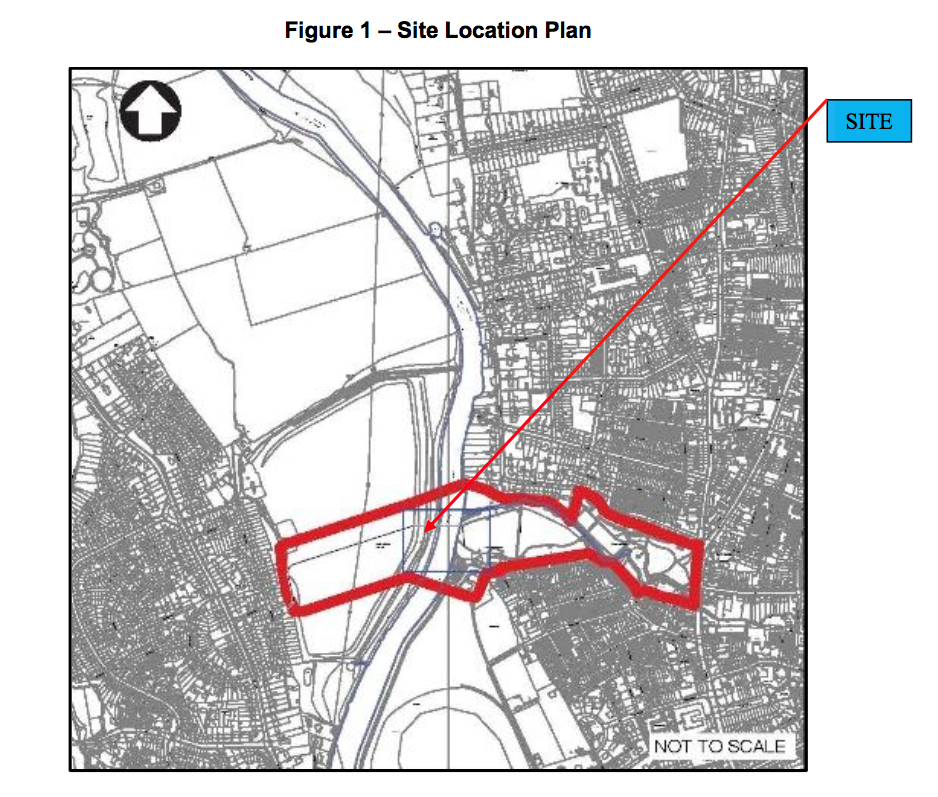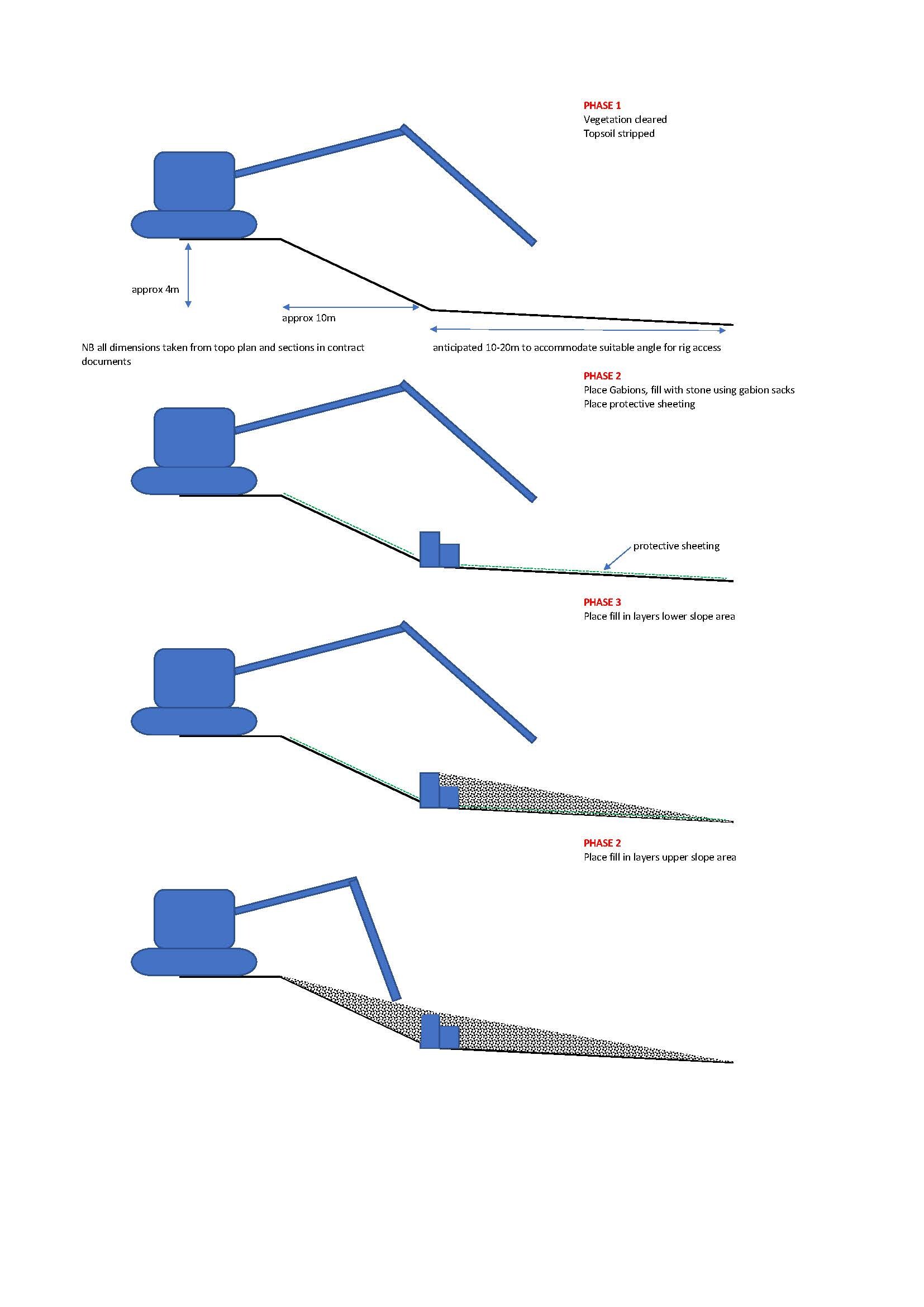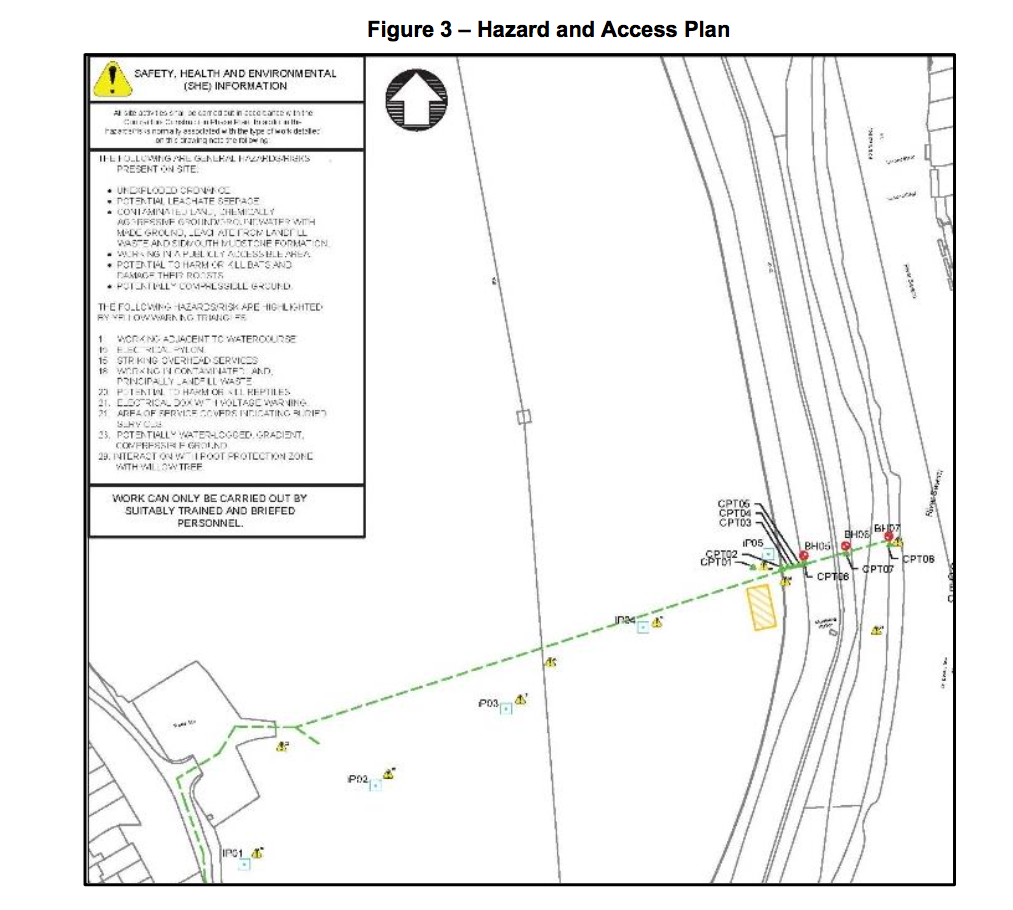Phase 2 Ground Investigation : Kepax Cycle Footbridge
Ground Investigation Works to Support the Construction of a Footway Cycle Bridge
Earth Environmental & Geotechnical have been commissioned by Jacobs Consultancy Ltd on behalf of Worcestershire County Council and Worcester City Council to undertake phase 2 ground investigation works to support the construction of a footway cycle bridge, Kepax Bridge, that crosses the River Severn to the north of the city.
The works involved provision of Construction Method Statement, organisation of materials, plant, site supervision and more… A ramp will be constructed to allow drilling rigs an access area at the base of slope to carry out ground investigation works.
The access ramp will be formed on the eastern edge of Hallow Road Closed Landfill Site on the western of the River Seven to the north of Worcester city centre. A location plan is presented in Figure 1 below.
The site is located on the site of the former (closed) Hallow Road Landfill.
https://www.worcestershire.gov.uk/kepaxbridge
Scope of Works
The access ramp will be formed on the eastern edge of Hallow Road Closed Landfill Site on the western of the River Seven to the north of Worcester city centre. A location plan is presented in Figure 1 below.
The site is located on the site of the former (closed) Hallow Road Landfill.
Plant, Materials and Personnel
The following plant, materials and personnel will be required for this project:
Plant
Small excavator
Tracked dumper
Tracked long reach excavator
Personnel
Machine operatives
EEGSL Supervising Engineer
Labourer (and banksman)
Materials
Gabion Baskets (including gabion sacks)
Suitable aggregate
Protective sheeting
Method of Construction of Bund
General
The general sequence of operations is: Vegetation clearance
Topsoil strip
Formation of ramp.
Delivery of Materials
All materials will be delivered to the existing depot (Horsford Road) on the western side of the landfill site.
Materials will be loaded into a tracked dumper and taken to the site of the proposed ramp. Temporary matting will be used for access routes in areas of particularly soft ground.
Site Preparation
Vegetation clearance will be undertaken by the Client, prior to construction of the access ramp. Topsoil will be stripped and stockpiled.
Protective sheeting will be placed over the exposed slope
Sequence of Operations
Gabion baskets will be placed to form the core of the ramp and also provide support at the base of the steepest part of the slope.
The reasons for the use of gabions are:
- To provide a retaining structure to aid in the stability of the ramp during installation.
- To facilitate a quicker installation of the ramp. And
- To provide additional stability to the ramp during use.Gabion baskets will be filled with aggregate using gabion sacks.Aggregate will be placed on the lower part of the slope, closest to the river, to provide support stability for higher areas of filled slope. Aggregate will be placed in layers (approximately 200mm thick) and compacted using a combination of the excavator bucket and a wacker plate.Aggregate will be placed on the upper part of the slope, retained by the gabions. Aggregate will be placed in layers (approximately 200mm thick) and compacted using a combination of the excavator bucket and a wacker plate.
Please note, on completion of the ground investigation works the ramp will be left in-situ for future use.
To enable drilling rigs to track down the ramp, it should be constructed to a maximum angle of 20°.
The sequence of operations is shown in Figure 2,
Site Specific Hazards
A review of the site has identified a number of site-specific hazards that require consideration. These are assessed with the remainder of this section.
A Hazard and Access Plan is shown in Figure 3 below.
Working within a Flood Risk Area
To manage the potential flood risk, A Flood Evacuation Plan (EEGSL Ref: B1315/20/FEP, September 2020) has been developed to ensure the preparedness, in the event of a flood emergency, of ground investigation personnel during the ground investigation works. A copy of the Flood Evacuation Plan is provided within the site file. All personnel on site should be familiar with the requirements of this document.
The key details of this plan should be detailed within the site induction / toolbox talk, prior to start of construction.
Hazards associated with Constructing the Ramp
The hazards identified with constructing the ramp are:
- Working with plant
- Unstable ground
- Working on slopes
- Manual lifting
- A site specific risk assessment and details of mitigation measures are included in Appendix 2.
Working Close to Landfill Site
Under no circumstances will construction methods affect the integrity of the landfill capping. Excavations must not be undertaken in the existing bund. Topsoil stripping will only be undertaken on the slope sides and lower slopes closer to the river, which are anticipated to be a suitable distance from the landfill as to not effect it.
Other Matters
All personnel should have the appropriate experience and qualifications to work with the plant on site.
All plant must be properly maintained and in calibration.
COVID-19 Operating Procedures
Any Earth Environmental & Geotechnical (Southern) Ltd (EEGSL) sites operating during the Coronavirus Covid-19 pandemic need to ensure they are protecting their workforce and minimising the risk of spread of infection.
Specific guidance and risk assessments are presented within Appendix 3 and these intended to introduce consistent measures on sites of all sizes in line with the Government’s recommendations on social distancing.
These are exceptional circumstances, and the industry must comply with the latest Government advice on Coronavirus at all times.
For full details of the Project and related Risk Assessments please download the PFD
Phase 2 Ground Investigation and Construction Method Kepax Bridge


